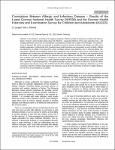Correlations Between Allergic and Infectious Diseases – Results of the Latest German National Health Survey (NHS98) and the German Health Interview and Examination Survey for Children and Adolescents (KiGGS)
Langen, Ute
Röhme, J.
In the literature, according to the hygiene hypothesis, infections should be expected to correlate with fewer allergies. However, several studies clearly show that infections – especially infections of the upper respiratory tract – and surrogate parameters such as the use of antibiotics or paracetamol correlate with a higher rate of allergies. This article reviews the literature (50 articles are analyzed) on possible connections between infections and allergies and offers some possible explanations. Original data from population-based health interviews and examination surveys of adults, children and adolescents are added. These data show a clear correlation between most infections and an enhanced allergy rate. Nevertheless, although the correlastions obtained seem intriguing, it has to be kept in mind, that no clear direction of the correlations can be stated since the database does not allow for such interpretation. So, the data do not necessarily add to the picture of the hygiene hypothesis, as the infections could have followed the allergies. The probability of suffering from an allergy rises with the number of infections (or vice versa) a person has had (e.g. the risk for adults of developing asthma is enhanced to 1.3 CI-95% 1.2-1.4 with enhanced numbers of former infections with pertussis, chickenpox, scarlet fever, dysentery or typhoid/paratyphoid). This applies especially to pertussis (e.g. 15.8% CI-95% 13.6-18.3% of children with hayfever had pertussis versus 7.6% CI-95% 6.9-8.3% of the healthy children) and chickenpox infections (e.g. 84.7% CI-95% 82.7-86.6% of children with hayfever had chickenpox versus 66.8% CI-95% 65.8-67.8% of the healthy children), both of which are preventable by vaccination.
Dateien zu dieser Publikation
Keine Lizenzangabe

